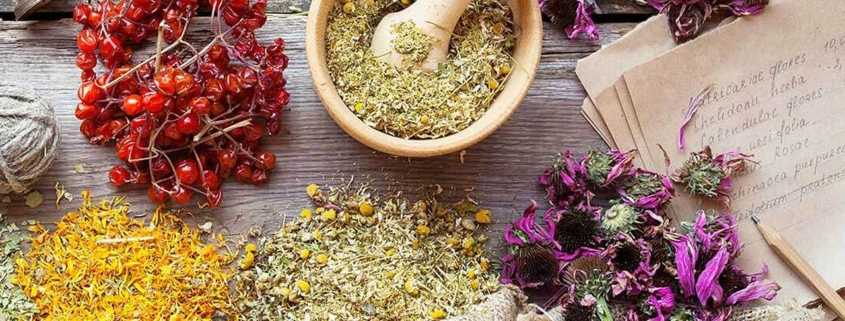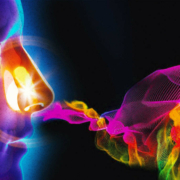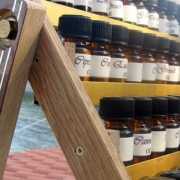Botanical Extracts in Natural Perfumery

In recent years, with the increasing scenario of health concerns using synthetic fragrances, there has been a shift toward natural perfumes as many people seek safe and natural ingredients in their favorite perfumes. Botanical extracts are natural, safe, and perfect for enhancing the quality of perfumery products.
Table of contents
-
What is a botanical extract and why botanical extracts?
-
Types of botanical extracts
-
Are essential oils botanical extracts?
-
Botanical perfumery
-
Final words
What is a Botanical Extract and Why Botanical Extracts?
Before we discuss botanical extracts, it’s worth knowing first what botanicals are.
Botanicals are substances that are collected from natural plant sources, more specifically from various parts of trees, plants, fruits, flowers, resins, and vegetables.
But sometimes you can’t just use these ingredients directly to produce any natural products. That’s why botanical extracts come in.
For example, you can’t add a whole rosebud to your natural rose perfume. While rose has tremendous healing and anti-inflammatory properties, putting whole pieces into your perfume could ruin it.
You also won’t get the full benefits of the herb doing this, as most of the phytochemicals (plant compounds) will be blocked inside the cells and fiber of the botanical.
That’s where botanical extracts come into practice. A botanical extract is a concentrated powder or liquid that allows you to add the tremendous properties of the specific botanical without harming the overall quality of a product.
A botanical extract represents naturally occurring plant-produced compounds, also known as phytochemicals, that have been separated from the inert structural parts of the plant. One of the major advantages of using botanical extracts is they are very convenient to add into several products than raw herbs and show more benefits in lesser quantities.
Types of Botanical Extracts
Botanical extracts come in several forms. Typically, extracts are categorized by their form or/and by the solvent used to prepare them. Some of the common solvents that are used to prepare botanical extracts include alcohol, water, vinegar, and glycerin. The innate qualities of these solvents attract different compounds of the herbs.
Here’re some types of botanical extracts –
Water-based extracts – water isn’t a strong solvent in nature; therefore, very rare plants can be extracted using water. Some common water-based extracts are –
- Green tea extract
- Aloe vera extract
- Cucumber extract
Tinctures – alcohol is a more powerful solvent compared to water and used in preparing tinctures. Other food-grade solvents may also be included in the tincture-making process. Some examples of tinctures include –
- Arnica
- Horse chestnut
- Calendula
- Nettle
CO2 extracts – CO2 extracts, also known as supercritical extracts. These botanical extracts are prepared by extracting botanicals using a gas, usually CO2 or carbon dioxide. The extraction process is done at very low temperature and high pressure to transform it into a supercritical state. These’re generally semi-solid extracts that represent the fat-soluble components of a botanical.
Examples of CO2 extracts include –
- Lavender CO2 extract
- Sea buckthorn CO2 extract
- Calendula CO2 extract
Natural isolates are controversial because they lately are produced through genetically engineered bacteria, from undisclosed raw materials, but they are certified by the industry as natural and organic.
Glycerites – instead of alcohol or water, glycerin is used as a solvent especially to prepare alcohol-free botanical extracts, commonly known as glycerites. These extracts are water-soluble. Some common glycerites include –
- Edelweiss
- Rose
- Horse chestnut
- Cucumber
Macerated or infused oils – macerated oils or infused oils are unique types among botanical extracts. These extracts are 100 % oil-based and hence oil soluble. As the name suggests, these extracts are left to macerate for several weeks just like tinctures. Some examples of macerated oils include –
- Carrot infused oil
- Aloe vera oil
- Arnica oil
- Comfrey infused oil
- John’s wort oil
- Calendula infused oil
Powdered extracts – powdered botanical extracts are made by drying liquid extracts often under vacuum. Powder extracts can be formed from tinctures and water extracts. Examples include several spices and herbs such as –
- Ginger powder extracts
- Curcumin extracts
- Cinnamon extracts
Liquid extracts – liquid botanical extracts, also known as herbal infusions, are comprised of distilled or spring water that has been infused with spice, herbs, flowers, or other natural substances. These liquid extracts are water-soluble.
Examples include –
- Green tea liquid extract
- Grapefruit liquid extract
- Asparagus liquid extract
Are Essential Oils Botanical Extracts?
Essential oils are the most widely used natural ingredients in the natural perfumery industry. Though technically essential oils are botanical extracts, in practice these oils are varied and distinct and create their own category “aromaceuticals”.
Essential oils are typically more potent with their strong aromas than botanical extracts. The extracting method is also quite different.
An infused botanical oil, for example, is normally the process of allowing botanicals to infuse with oils for several weeks, where the distillation process of essential oils is much quicker and the extracts are much purer.
Essential oils are used in natural perfumery to produce therapeutic beneficial natural perfumes that are used in aromatherapy.
Botanical Perfumery
Natural perfumery basically depends on 2 major types of ingredients – botanical extracts and animal extracts.
We’ll discuss only botanical perfumery here. (To learn about animal extracts, click here)
Human civilizations have used the scents of nature for centuries often in the form of natural perfumes. Surprisingly, perfumes are originated from natural sources.
You might be thinking, how a plant transforms into a perfume?
Well, through an old and very common manufacturing process, typically known as extraction. Extraction isn’t an easy task and there’re a few different methods some of which are more compatible with certain herbs than others.
The extraction process begins with the gathering of botanicals. This is generally done by hand like handpicking the flowers and pulling up the roots. Then the botanicals come to the extraction process.
Here’re a few extraction methods used in natural perfumery to produce botanical extracts.
Extraction Methods
Solvent extraction – botanicals are placed into a rotating drum and then coated with a solvent like benzene. The solvent dissolves the herbs and left a waxy material containing oils. The waxy material is then dissolved in alcohol which is evaporated and leave behind a natural perfume oil.
Enfleurage – it’s one of the oldest traditional methods for extracting natural oils from flowers using fat. Flower blooms are placed into a glass sheet covered with a fat substance and left for days to capture their scents. The oils are captured by dissolving the fat substance in an alcoholic solvent. Vegans should avoid essential oils obtained in this way, because the fat used is probably of animal origin, usually lard.
Distillation – botanicals are heated and their oils evaporate with the steam. The ingredients are then captured through a condensing process from the distilled vapor. This is the most used method to produce essential oils.
CO2 extraction – also known as supercritical extraction process and mainly CO2 is used to extract the oils. At its supercritical state that’s between liquid and gas, CO2 penetrates through the botanicals to extract the essential oils.
Dry distillation – this method is usually used to produce resins. it’s simply burning the resinous botanicals leaving behind the resin ingredients.
Botanical extracts provide 2 major advantages in natural perfumery –
- Help to produce customized perfumes according to needs.
- Help to differentiate natural perfumery brands to stand out in the competition.
Final words
Botanical extracts are amazing to produce natural perfumes, but without animal extracts it’s incomplete. The entire natural perfumery is a whole including botanical and animal extracts. But you’ll obviously have your own preference to choose “vegan” or “non-vegan” natural perfumes as per your wish.
Check out our complete list of ingredients to know what types of botanical extracts we use in our natural perfumes.
If you’ve had a look at our natural perfume products, perhaps you have noticed that we use lots of wonderful and “weird” botanical extracts such as tinctures, essential oils, concretes, and many more in our products.
(If you haven’t checked our natural perfume ranges yet, you can check out here)
Here you can check out our courses





















Leave a Reply
Want to join the discussion?Feel free to contribute!